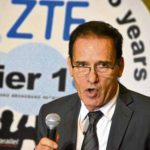
Proposal for BRT system along Ayala Ave. revived
Posted on November 29, 2016
http://www.bworldonline.com/content.php?section=Corporate&title=Proposal-for-BRT-system-along-Ayala-Ave.-revived&id=137016
THE MAKATI Commercial Estate Association (MaCEA) has revived its proposal to create a bus rapid transit (BRT) system within the country’s premier business district.
“In our current plan, which is submitted subject to approval, what we propose is that we put the BRT lanes and then we are going to pulse the buses that are going to turn right on EDSA,” said Mr. Blas, who also serves as vice-president of the strategic landbank management group at Ayala Land, Inc.
The BRT system will help ease traffic congestion in the business district, William V. Coscolluela, vice-president of the association and principal architect at W.V. Coscolluela & Associates, told reporters during the same event.
“Actually, the plans are already finished and it’s just a question of arrangement and everything. I think hopefully by next year, we can start on this,” Mr. Coscolluela noted.
The proposal has been submitted to the Department of Transportation (DoTr), which received approval from the National Economic and Development Authority (NEDA) Board chaired by President Rodrigo R. Duterte in September to undertake a similar project across the National Capital Region.
The DoTr plans to create a P37.8-billion Metro Manila BRT System to help ease traffic congestion. The system will have 63 stations and stretch 48.6 kilometers along the region’s main thoroughfare EDSA from Monumento to Roxas Boulevard.
“Actually it’s a priority project and it’s just been approved and we’re now working on the financing arrangements,” Transportation Undersecretary for Road Transportation and Infrastructure Anneli R. Lontoc told reporters.
“So there are several private sector groups that approached us but then maybe we will get back to them when we have finalized within the government agencies how we will proceed,” Ms. Lontoc said, noting the government project will lead to Ortigas Center, Bonifacio Global City, Makati Central Business District and Ninoy Aquino International Airport.
“Because there is already a NEDA-approved BRT plan, which will interconnect all of EDSA and Ayala Avenue, our thinking is that we start with Ayala Avenue then when the rest of the network is complete we’ll just connect,” Mr. Blas noted.
MaCEA already sought the government’s approval for the BRT system along Ayala Avenue — a private road — two years ago, Mr. Coscolluela said.
PEDESTRIANIZATION
On Monday, the association inaugurated the 305-meter extension of the De La Rosa Elevated Walkway stretching from V.A. Rufino Street to Salcedo Street.
MaCEA spent P110.6 million to construct the extension over a year and eight months. The project has made the De La Rosa Elevated Walkway the country’s longest elevated pedestrian walkway at 1.1 kilometers.
Also, the association is working on the sidewalk enhancements for the De La Rosa and Valero streets along with their interconnecting streets; an on-grade covered walkway along Valero, V.A. Rufino and De La Rosa near Makati Medical Center; and an above-grade pedestrian crossing at the corner of Ayala Avenue and Sen. Gil. J. Puyat Avenue.
The group of property owners in the Makati Central Business District looks to invest about P150 million for the pedestrianization program next year.
“We envisioned the program as a network of tri-level pedestrian pathways composed of underground passageways, on-grade covered sidewalks and elevated walkways,” MaCEA President David L. Balangue said in a statement.
“Ultimately, it will encourage motorists to leave their cars and join the pedestrians on short trips to the commercial center and back, which is the core objective of the pedestrianization program.”









